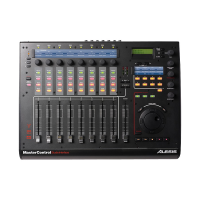section 18: tips for warming up your a6
or: how to get that “classic analog” looseness out of the andromeda
The Andromeda shares a lot in common with other modern, computer controlled analogs. It
is incredibly flexible, and can imitate a wide variety of sounds that other analogs cannot
touch. It has lots of MIDI control.
It also is a little “ tight” sounding.
Modern technology permits today’ s electronic components to be much more tolerant than
before. Add the ASIC technology that the Andromeda uses, and the Andromeda does not
sound quite as “ fat” as “ classic” analogs before them.
Tight sounds are great for many applications – you do not always want a huge sound
dominating the space. However, the Andromeda also can become much less tight sounding
in a pinch. I don’ t personally think this “ wideness” will be heard on low-key bar
soundstages and home recording situations as much, but it certainly will be heard in a high-
quality environment, or even playing through a decent PA.
Some rules to follow:
18.1 turn off background tuning, or (optionally) temperature tuning:
If you hit the “a uto tune” switch, then soft button one to go to the tuning menu, you will see
two autotune functions.
Soft knob two will control BKTUNE; this is whether the “ background tuning” function is on
or off. Leaving this on gives a much “ tighter” sound, and will pretty much prevent the need
to autotune once turned on. Temperature tuning however is pretty good at stabilizing the
sound of the Andromeda. So the general recommendation is to leave temperature tuning off
for a thicker sound.
Soft knob three will turn on and off the TMPTUN function. Turning this off turns the
“ temperature tuning” function off. Without the temperature tune, the sound is more fluid
and

